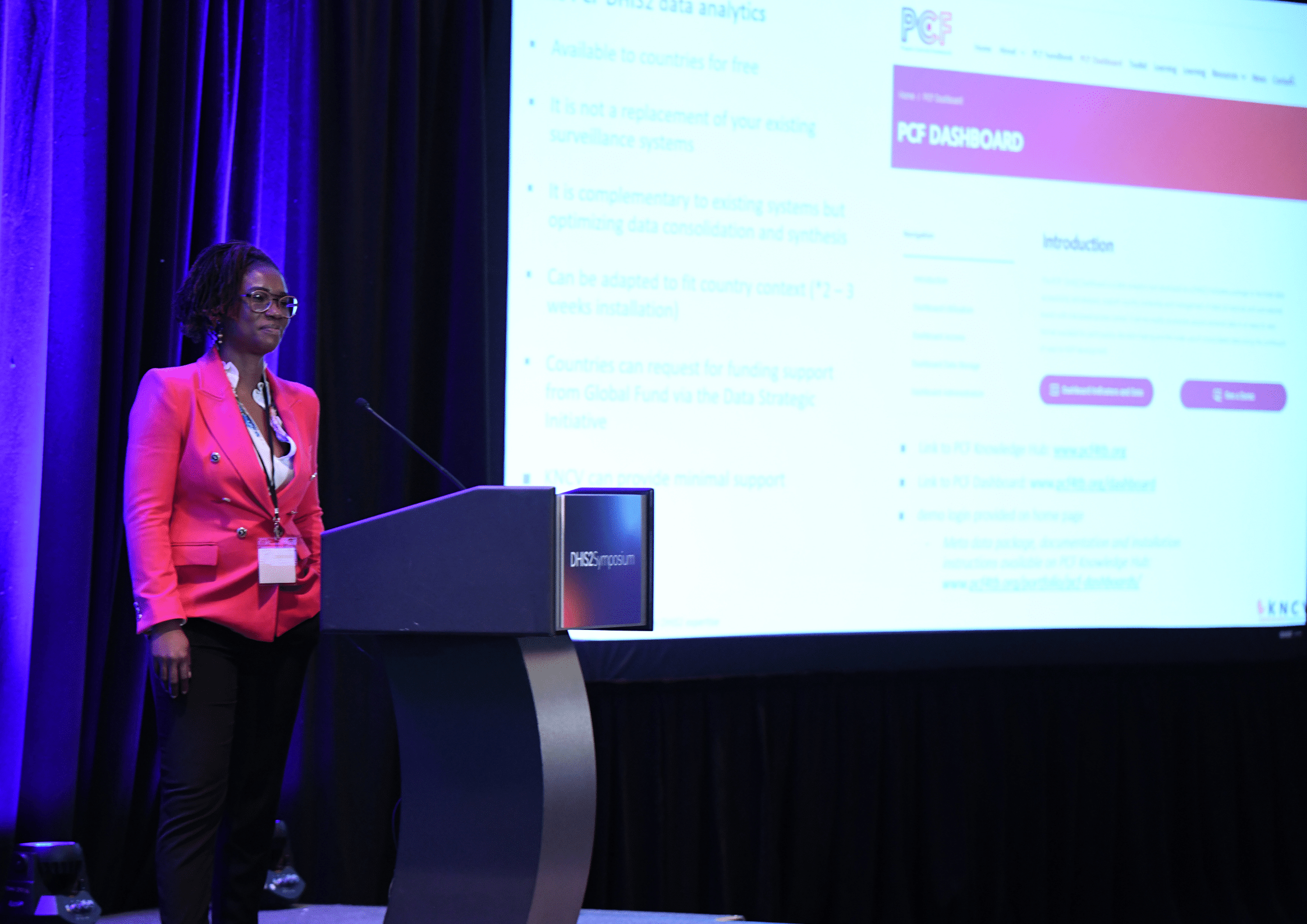KNCV unveils The PCF Dashboard during the world’s largest health information management system symposium
Last week, Egwuma Efo, Digital Health Specialist for KNCV Tuberculosis Foundation, spoke at the 2022 DHIS2 Symposium. International experts from global development agencies, governments, and NGOs convened because they are committed to using data to drive decision-making and real-world impact. The DHIS 2 runs in over 60 countries and is the world’s largest health information management system. It provides many possibilities for building integrated yet customized information systems. The system was developed and is managed by the Department of Informatics at UiO and supported by the Health Information Systems Programme network. Since 2013, DHIS 2 has become the management information system of choice for many international NGOs working across various sectors.
Ms Efo introduced the people-centred Approach Framework for TB program planning and the PCF DHIS2 data analytics platform concept in her session entitled “Reimagining TB programming and planning using people-centred Evidence”. The PCF DHIS2 data analytics platform concept is a new way of thinking about TB programming and planning that focuses on the needs of people affected by TB.
Data stored within country HMIS with pre-built visuals for easy data trend visualisations and program review
Session participants learned that the PCF DHIS2 Dashboard is a data analytics tool that helps National Tuberculosis programs to review the evidence and make decisions while using a patient-centric view.
The PCF Dashboard provides access to the following:
– A prioritised set of indicators to monitor along the patient care-seeking journey.
– Categorised evidence as epidemiological, system or people data types.
– Simple auto-populated dashboards and visuals that highlight the gaps along the patient pathway.
– Seamless integration into existing country DHIS2. Data duplication is eliminated by mapping the PCF dashboard data elements or indicators to the country’s while allowing data entry (at the selected country organisational level) where there are data gaps.
Experience from early adopter countries points to ease in TB reporting and programming
KNCV has worked with early adopter nations to help them embrace the approach and tools. The approach was initially piloted in Kenya and then applied in 9 early adopter countries: Cambodia, Ethiopia, Ghana, Indonesia, Namibia, Rwanda, Uganda, Tanzania, & Vietnam. More recently, Zambia became the newest country to adopt the approach and implement the PCF DHIS2 Data analytics platform.
Ms Efo shared Zambia’s experience. The Zambia NTLP set up the MOH National TB and Leprosy Program (NTLP) TB Situation Room to manage the epidemic.
Before using the PCF DHIS2 Dashboard, the country struggled with extra-large excel spreadsheets, which often became corrupted to capture data. Furthermore, weekly data collection from reporting facilities was unwieldy. After the NTP staff began using the dashboard, they noticed the ease of collecting and interpreting the data. The team converted the TBSR spreadsheets into a DHIS2 Meta package and imported them into the Zambia DHIS2. Data entry was easy using the DHIS2 data entry screens with a real-time auto-populated dashboard. The NTP staff appreciated the summarized visual data because it will continue to help them more effectively monitor the epidemic.
To find out how the People-Centered Framework Analytics DHIS2 dashboard can help you develop more robust National Strategic Plans, signup to our upcoming webinar (date to be confirmed) here.
